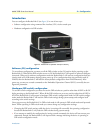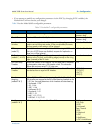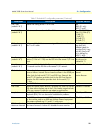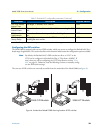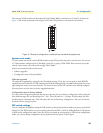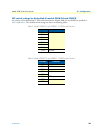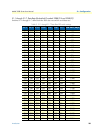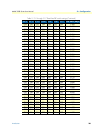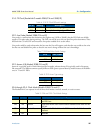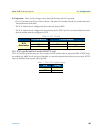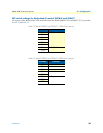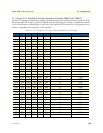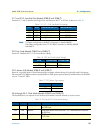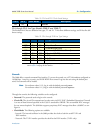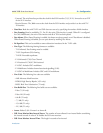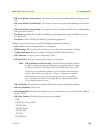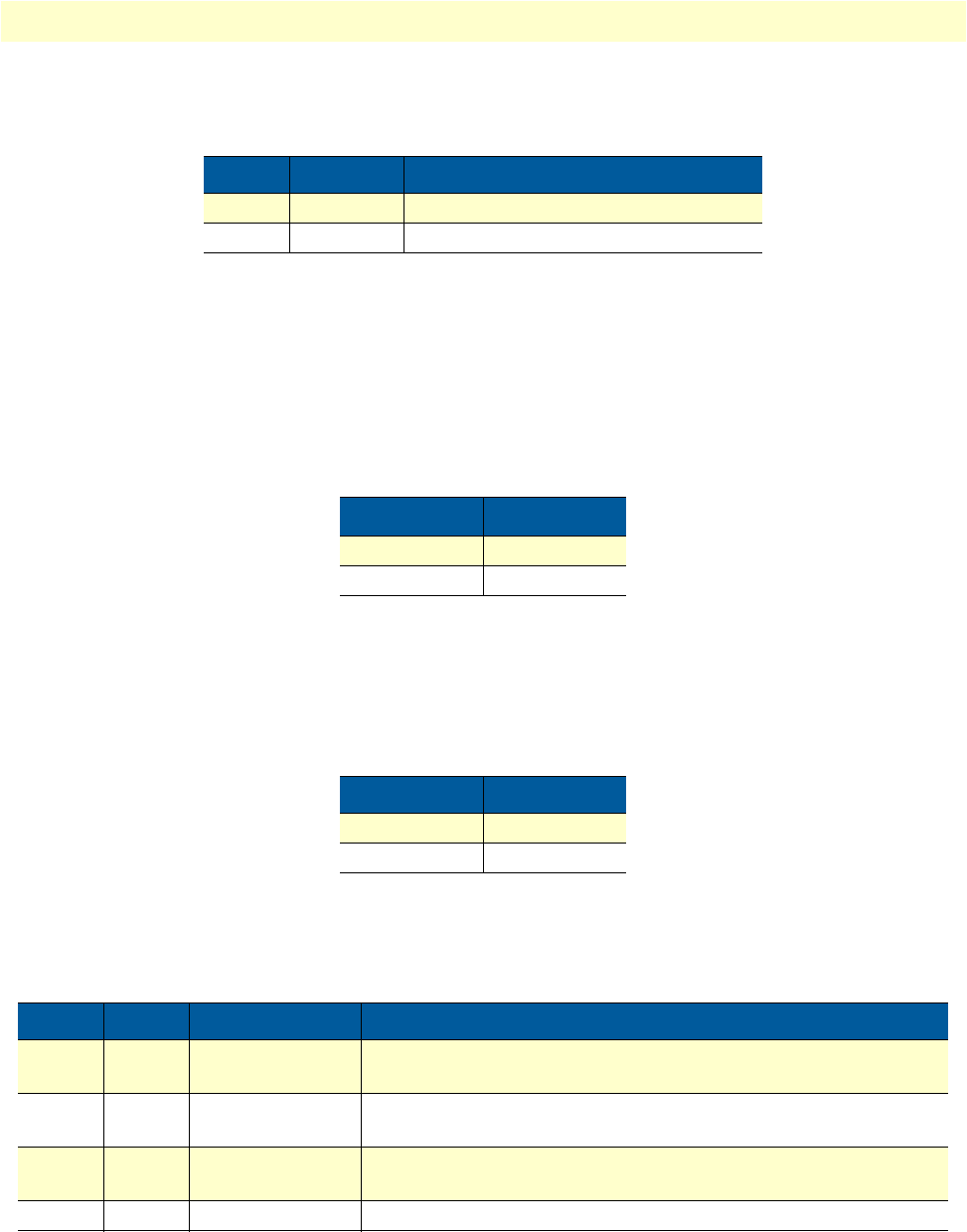
Introduction 27
Model 3088 Series User Manual 2 • Configuration
S1-8: TX Clock (RocketLink-G models 3088/CA and 3088/D)
S2-2: Line Probe (Models 3088/CA and D)
Line probe is a mechanism that determines the highest rate (192K to 2304K) that the DSL link can reliably
support. This takes place during training. The DSL rate will be set to the rate that line probe determines. Note
that both the CO and CPE unit must have line probe enabled for it to take effect.
Line probe could be used to determine the best rate the line will support, and then the user could set the units
for that rate and disable line probe so that the rate won’t change without the user’s knowledge.
S2-3: Annex A/B (Models 3088/CA and D)
Annex A is typically used in North American-like networks, whereas Annex B is typically used in European-
like networks. The different annexes specify different PSD (power spectral density) masks because of the differ-
ence in T1 and E1 PSDs.
S2-4 through S2-5: Clock Mode (Models 3088/CA and D)
The RocketLink-G can operate in one of three clock modes: internal, network, or receive-recover.
Table 6. S1-8 TX Clock DIP switch settings
S1-8 Setting Description
ON Normal TD sampled on falling edge of TX clock.
OFF Inverted TD sampled on rising edge of TX clock.
Table 7. S2-2 Line Probe Switch Settings
S2-2 Line Probe
ON Disabled
OFF Enabled
Table 8. S2-3 Annex Type settings
S2-3 Annex
ON A
OFF B
Table 9. S2-4 and S2-5 Clock Mode Settings
S2-4 S2-5 Clock Mode Description
ON ON Internal The on-board oscillator in the 3088 provides clock for both serial
and DSL lines.
OFF ON Network 3088 uses the RX clock from the serial interface as the clock for the
DSL link.
ON OFF Receive-Recover 3088 uses the RX clock from the DSL line as the clock for the serial
interface.
OFF OFF Reserved



